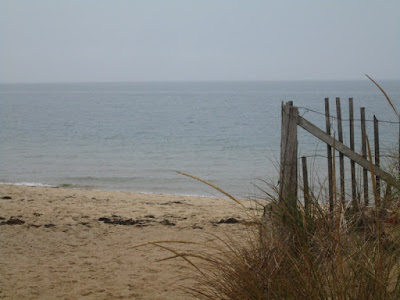Plymouth Massachusetts
(Exact replica of the Mayflower)
The Pilgrim saga began with a group of religious dissidents who believed it necessary to separate from the Church of England.
Persecuted in England these 'Separatists' moved to Holland in 1607.
They soon found their lives in Holland to be as difficult as they had been in England.
Joined by others the group began the move to America in 1620.
Due to a number of unfortunate delays the Pilgrims did not arrive in the new world until Dec. 1620. All 130 passengers and crew had to remain on the ship until spring when timbers could be cut and some structures built.
The ship was anchored some distance from shore and all transportation back and forth to land was via a small sailing vessel. Living conditions on board were obviously miserable.
The Mayflower passengers went heavily into debt to come to America, borrowing from a group of English 'Merchant Adventurers'. Merchants and passengers together formed a stock company, which held all money, livestock and land. Assets were to be divided after seven years.
The colonies were not a success for the investors. More money was borrowed to purchase supplies. The colonists eventually repaid approximately 1/3rd of the debt.
The Compact that was drawn up to govern the new colony was communal (a lot like the Shaker commune). However, from the beginning the Church and the Government were strictly separate.
The Mayflower Passengers (approx. 130)
One year later.
"Fifty Three survived to the first Thanksgiving in 1621"
The Museum in Plymouth has a number of items that actually came over on the Mayflower:
Matchlock Musket
Sword and Scabbard
Among the Mayflower passengers were Priscilla Mullins, John Alden and Myles Standish. Priscilla was in her late teens, John in his early twenties, Myles perhaps 27 was widowed the first winter of 1621.
At some point John and Priscilla married and produced 11 children. Myles Standish remarried. Both families were among the founders of the town of Duxbury to the north of the original settlement of Plymouth.
Henry Wadsworth Longfellow, an actual descendent of John Alden, in 1858 wrote his popular epic poem, "The Courtship of Miles Standish" out of an old family story.
Longfellow imagines Myles as a brave but inarticulate soldier who sends young John to plead his case with the beautiful Priscilla. John is torn between duty to the Captain and his own love for Priscilla. Priscilla, despite her maidenly reserve, chooses her own mate.
In early autumn of 1621 the 53 surviving Pilgrims celebrated their successful harvest, as was the English custom at the time.
The land had long been inhabited by Wampanoag, native Americans whose leader, Massasoit, befriended the Pilgrims. Without the help of the Wampanoag, the Pilgrims would likely have starved soon after their arrival.
The Wampanoag have lived in southeastern New England for thousands of years.
The Native Peoples were familiar with Europeans, who had been exploring and fishing here since the 16th century.
Many of the Indians came to the celebration including King Massasoit, with some ninety men. This celebration is now remembered as the First Thanksgiving.
Squanto was a Wampanoag native of Patuxet (today Plymouth). In 1614, Thomas Hunt, an unscrupulous English sea captain, kidnapped several Natives, including Squanto, and sold them to Spain. Somehow Squanto made his way to London where he became acquainted with English explorer Thomas Dermer, sailing back to New England with him in 1619. He discovered his village was vacant, emptied by disease. He went on to serve as guide and interpreter between the natives and the Pilgrims and remained with the colonists until his death in 1622.
A piece of Plymouth Rock and my hand.
I was surprised to find this rock in the museum and asked the docent about it. She informed me that there are many pieces of the original 'Plymouth Rock' that have been chiseled away over the years. This one piece was returned to the town probably by someone with a guilty conscience. .
Pilgrim Memorial State Park is designed around Plymouth Rock, a large glacial boulder deposited in the harbor and smoothed by centuries of tidal wash. The rock is not only a landmark, but also a symbol of the courage and faith of the men and women who founded the first New England colony.
"Here is a stone which the feet of a few outcasts pressed for an instant; and the stone becomes famous. It is treasured by a great nation; its very dust is shared as a relic."
Alexis De Tocqueville, 1835
The Docent at the memorial was this very exuberant young man. He was due to get off work and was just leaving when a dozen tourists, including myself, walked up. Someone asked him a question and in seconds he was pouring out this great oratory on why this rock is the "Talisman of our Country", the "Symbol of our Strength," and so much more. For 20 minutes he expounded on how, for years, people had chipped away at the rock, taking souvenir chunks home to sit on their mantels.That it was a 90 year old resident of the town that pleaded with the town council to not build a boat dock on top of what was left, and how, finally, the townspeople erected this memorial that protects what remains of the rock. When the young man finished his amazing soliloquy there was silence, then suddenly applause.
I think Thanksgiving is going to be even more special to me this year.





























































